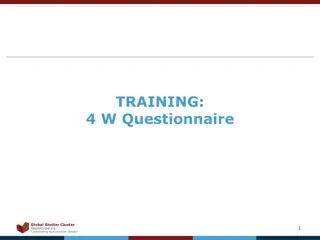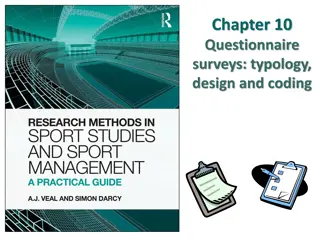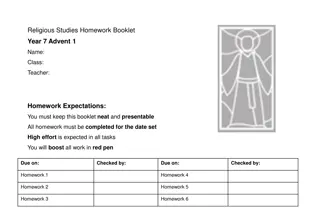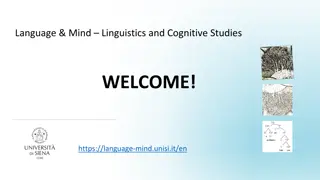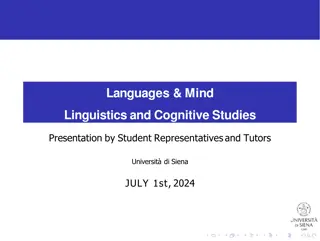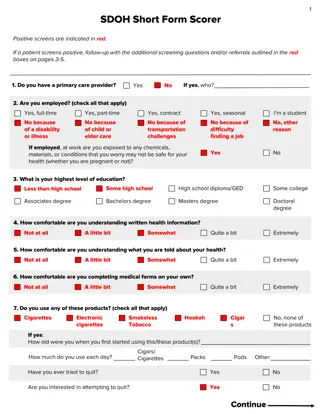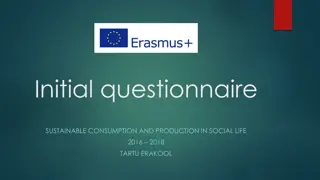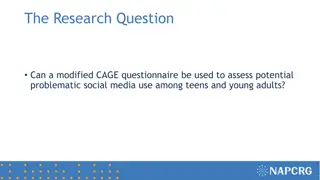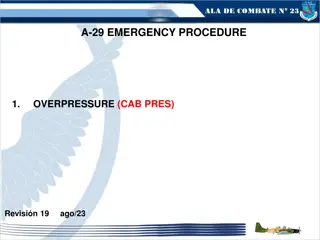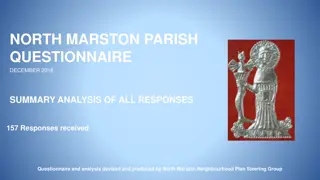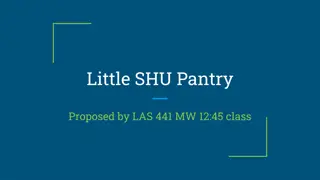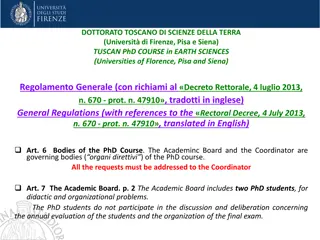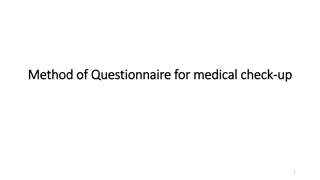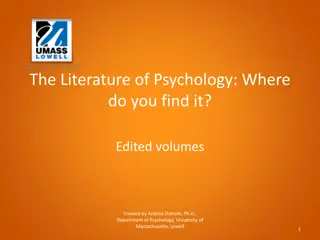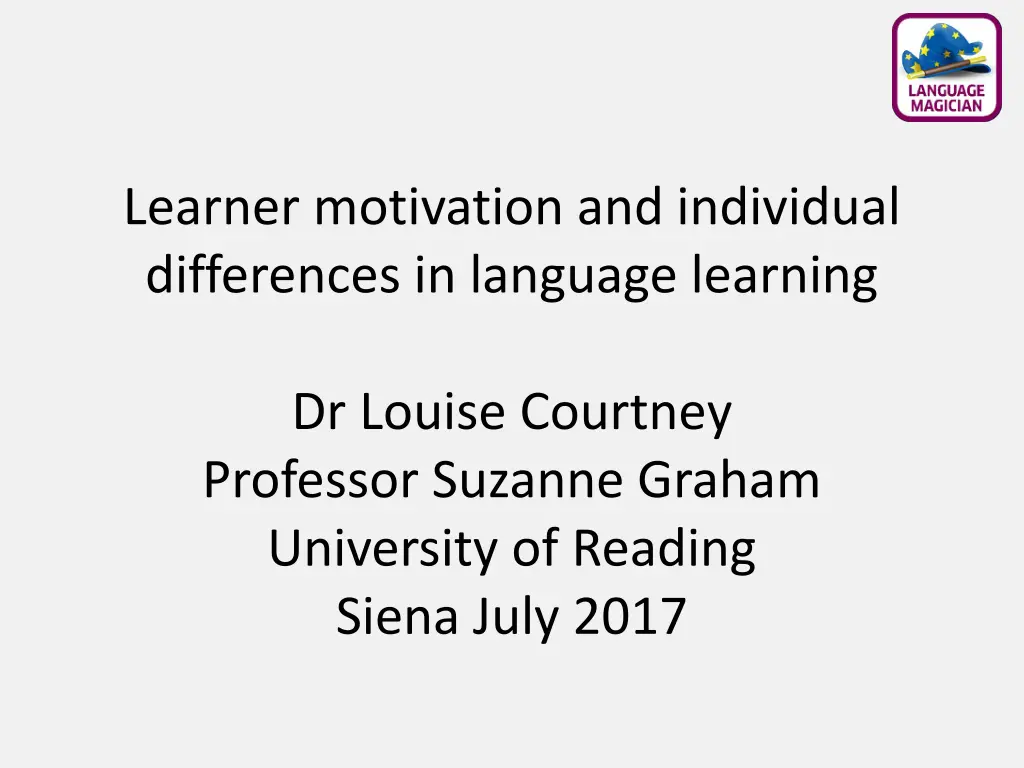
Key Elements in Learner Motivation and Individual Differences in Language Learning
Explore the importance of learner motivation and individual differences in language learning based on research findings and questionnaire data analysis. Understand how factors like self-efficacy, game engagement, and attitudes towards language learning impact outcomes and progress.
Download Presentation

Please find below an Image/Link to download the presentation.
The content on the website is provided AS IS for your information and personal use only. It may not be sold, licensed, or shared on other websites without obtaining consent from the author. If you encounter any issues during the download, it is possible that the publisher has removed the file from their server.
You are allowed to download the files provided on this website for personal or commercial use, subject to the condition that they are used lawfully. All files are the property of their respective owners.
The content on the website is provided AS IS for your information and personal use only. It may not be sold, licensed, or shared on other websites without obtaining consent from the author.
E N D
Presentation Transcript
Learner motivation and individual differences in language learning Dr Louise Courtney Professor Suzanne Graham University of Reading Siena July 2017
Learner Motivation Key element to success of the Language Magician game Concern over de-motivating effects of traditional assessment Feelings of self-efficacy crucial to developing resilience and long term commitment to language learning Learners able to see that they are making progress
Individual Differences Research Evidence indicates; Age-related differences in terms of motivation and outcomes Motivation and feelings of self-efficacy are related to outcomes Hours of instruction linked to FL outcomes
Questionnaire Design Data collected via an online questionnaire immediately following the game session 22 questions related to the game, language learning in general and perceptions of their own ability (self-efficacy) 2167 responses
Questionnaire design Scale 1-4 average scores will be reported a) THE LANGUAGE MAGICIAN game is fun to play. Agree very much Agree Disagree Disagree very much
Individual Data collected Collected at start of testing: Gender information hours of instruction age at testing date of birth entered for each learner Test scores and questionnaire responses recorded by game totals and means calculated in SPSS
Questionnaire results all learners Scale Average Range Overall 3.31 1-4 Language Magician Game 3.42 1-4 Self-efficacy 3.02 1-4 Attitudes to learning languages 3.51 1-4
Results for game questions - all learners Question Average 1_0 Game is fun to play 3.71 1_1 Game is easy 2.85 1_2 Would like to play game again 3.72 1_3 Tells me how well I m doing 3.43
Results for self-efficacy questions - all learners Questions Average 2_0 I can say some words about myself 3.12 2_1 I can write some words about myself 3.01 2_2 I understand what my teacher says to me 3.05 2_3 I can spell the words I ve learned at school 2.99 2_4 I know what order to put the words in a sentence 2.85
Results for language learning questions - all learners Questions Average 3_0 Learning xx language is important 3.65 3_1 Learning xx language is fun 3.60 3_2 Learning xx language will help me get a good job 3.44 3_3 Learning xx language will help me if I want to travel 3.57 3_4 I would like to have more time to learn xx language 3.31
Gender differences all learners For the most part the girls displayed significantly more positive attitudes Scale Overall Gender Mean Sig. Diffs. Yes M F 3.28 3.35 TLM Game M 3.36 Yes F M 3.47 3.00 Self-efficacy NS F 3.02 Language Learning M 3.46 Yes F 3.55
Age-related differences Average age at testing was 9.02 years (6.95-12.13) Questionnaire Average Attitudes to game Self- efficacy Attitudes to language learning Age at testing -.080** .032 -.120** -.073**
Open questions general themes Most liked the animals, the game aspect, element of challenge, learning while playing, choice element: Not liked difficulty for some, need more time, a very few thought it was too easy Easiest first floor, casting spells, listening Most difficult the last part (floors 3-5), typing when words spoken, making sentences, colouring task (unclear) What learned new words, more of the language, writing, spelling, that learning can be fun i leart some new skills in german i have never leart before so i thank this site!
Learners in England and in Germany Challenge and learning more language more prominent among learners in England: I liked that i had to try realy hard and it wasnt easy But also more likely to say it was too hard or too easy Learners in Germany placed more emphasis on writing as being an aspect they disliked .and on learning about learning from the game: Das Englisch Cooler ist als gedacht ; Das ich ganz gut Englisch kann Learners in England more likely to say they learnt new words from the game
TLM results and Individual Differences Average score for all learners 209.09 (s.d. 42.55) Range 51-346 - highest possible score is 348 Some learners performed very well on level 1, whereas others found this more challenging
Motivation and Results There is a small but significant relationship between overall questionnaire scores and results (r=.178, p<.001) There is a small but significant relationship between overall attitudes to the game and results (r=.167, p<.001) Very small but significant correlation with self- efficacy scores (r=.120**)and language attitudes (r=.111**)
Gender Differences - outcomes Girls - 208.17 n=1286; Boys 210.03 n=1260
TLM results and age-at-testing r= 4.06**
Hours of instruction Average no. of hours of instruction = 125.36 (range 10-550) There is wide variation across countries
Hours of instruction There is a very small but significant relationship between hours of instruction and results (r=.133, p<.001) However, if you control for age at testing then the correlation is stronger and significant (r=.263, p<.001) meaning that hours of instruction does influence outcomes
Summary Generally very positive attitudes to the game and to language learning in general Girls display higher levels of motivation than boys but there is no significant difference in test results Older learners tend to have slightly more negative attitudes to language learning and their own self-efficacy but there are no age- related differences in attitudes to the game
Summary There is wide variation in results from the testing Indicates that game can assess learners across the ability range Motivation related to outcomes but age at testing and hours of instruction are the key factors to explain this variation
Vielen Dank. Thank you. Grazie mille. Muchas gracias.



